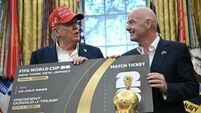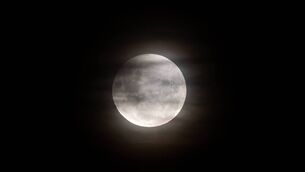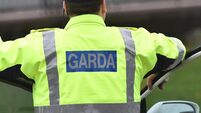Lynch was a hurler on the ditch for most popular event in Irish history
The first real indication that the Irish embassy in the Vatican got that the Pope intended to visit Ireland was on May 23, 1979 from Fr Dermot Martin, who is now the Archbishop of Dublin.
Fr Romeo Panciroli, the head of the Vatican press office, had told him he was present two days earlier when the deputy secretary of state was about to telephone the Irish ambassador and the archbishop of Armagh with the news. But nobody called the ambassador.
“Better for me to come up to the embassy and not to talk any further on the phone,” Fr Martin remarked. He promptly went to the embassy and explained the situation.
“The announcement concerning the journey to Ireland would have been made much earlier if not for the strong opposition on the part of the British to the idea,” Fr Martin explained.
“Fr Martin was a bit perplexed concerning the origin of advice reaching the Holy See and the Pope on Irish and Northern Ireland affairs,” the official at the Irish embassy reported.
“He mentioned that Msgr Bruno Heim, the apostolic delegate in London, had little or no interest in Northern Ireland affairs, adding that he had heard from an official in the Secretariat of State that the material they receive on Northern Ireland affairs comes mainly from the nuncio in Dublin, Msgr Alibrandi, and that when something is sent back to Msgr Heim for comment, there is little or no response from him.”
On June 30, 1979 Archbishop Tomás O Fiaich of Armagh was elevated to the College of Cardinals. When his predecessor, Archbishop William Conway, became a cardinal in 1965 Taoiseach Seán Lemass attended the ceremonies at the Vatican, so Lynch’s absence in 1979 was noted.
After RTÉ and the press commented on the Taoiseach’s absence, his office issued a statement. “In the case of receptions of cardinals into the Sacred College, the practice is that national delegations do not attend unless invited,” the statement noted. “As an invitation was not issued on this occasion, in accordance with practice, it was considered that it would not have been appropriate for a minister to be present.”
“On the 20th June, Fr Clyne, secretary to the cardinal-elect, phoned the Taoiseach’s private secretary to say that Archbishop O Fiaich was not expecting the Taoiseach to visit Rome for the consistory. The Taoiseach understood, therefore, that an invitation was not being issued to him.”
Lynch was obviously miffed because the statement continued: “Had an invitation been issued for the recent consistory, the Taoiseach would have been very happy to accept.”
This was extraordinary. The Pope was intending to visit Ireland, yet the Taoiseach was publicly snubbed.
Arrangements for the visit of Pope John Paul II to his native Poland in June 1979 had been left in the hands of the Polish hierarchy. A mixed commission was set up with the Polish government, but it had little influence because the two sides were unable to reach agreement on anything.
On reflection, the visit to Poland was undoubtedly one of the most significant visits anywhere by anyone during the 20th century. Poland was still behind the Iron Curtain in the grip of a communist government, but the visit started a ripple that turned into a tidal wave that had the most profound effect on eastern Europe over the following 10 years.
The papal visit was later credited with inspiring the formation of Solidarity, the first independent trade union behind the Iron Curtain. Formed in Poland in 1980, it gradually undermined the communist monolith in that country and the whole Iron Curtain essentially disintegrated in 1989.
Thus, it was significant that the Pope’s next foreign visit, after his monumental journey home to Poland, was his four-day stay in Ireland. He was on his way to the United States where he planned to address the UN. He became the first Pope to visit the White House, which was the symbolic breaking down of another barrier.
It was still less than 20 years since the election of the first Catholic as president of the United States. Prior to John F Kennedy’s election in 1960, there was a kind of conventional wisdom that no Catholic would ever be elected because this would be tantamount to handing the country over to the Pope. This was nonsense, but many Americans believed it.
Thus the Pope’s trip to Ireland was sandwiched between two great events. From the time when the future archbishop of Dublin informed the Irish embassy of the visit, it was apparent there could be problems. “Fr Martin made a passing reference to possible difficulties concerning Hierarchy/Government liaison,” according to the report of his visit to the embassy. “It was not clear if he was referring to the absence of an established machinery or procedure for such liaison or to something else.”
Lynch and his government had not only been snubbed in relation to the elevation of Cardinal O Fiaich, but he was also largely ignored in relation to the Pope’s visit. Maybe it was just insensitive arrogance on the part of the hierarchy, but it seemed more likely that it was a deliberate policy.
Why? Maybe it was because the Lynch government had the audacity to introduce legislation to legalise the sale of artificial contraceptives in Ireland that year.
WAS the bill introduced to get the question out of the way before the Pope could visit? Such questions could be asked, but the Department of Health apparently could not be bothered to fulfil its statutory obligation to release its files under the 30-year rule.
Whatever the reason, Lynch had little influence in relation to the papal visit. He recommended, for instance, that the Pope should go to the North because otherwise it would highlight the existence of the border, and he feared Ian Paisley would exploit the Pope’s absence as a personal victory. Paisley had already pledged to prevent the visit and there were fears of serious rioting.
In the tension of the time, especially in the aftermath of the Mountbatten murders only weeks earlier, a papal visit to the North would have invited trouble. Remember the Pope was shot in the Vatican only seven months later.
To invite this to happen in the North would have been crazy, so Lynch’s judgment on this matter must be seriously questioned. Cardinal O Fiaich was right not to entertain such a visit for purely political purposes. He argued that the Pope’s visit to Drogheda would suffice symbolically because it was within the archdiocese of Armagh.
Lynch’s office also suggested that the Pope should visit Cork and the Taoiseach would accompany him there. But, for some reason, the hierarchy did not buy that idea either. They decided the Pope should go to Limerick instead and fly out of Shannon. So, like St Patrick, Pope John Paul II never got to Cork.














